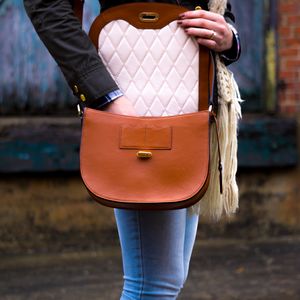When it comes to saving money, it's the little things
How cutting back on small purchases increases financial freedom
I like to think I'm a good saver, but when it comes to small purchases, I have zero impulse control. Starbucks has holiday drinks out? One caramel brûlée please. Got a dollar left on my Chick-Fil-A account? I know what I'm having for lunch. Spot a convenience store on my way home? Well, I needed to buy more gum anyway. And hey, I haven't had Nutter Butters in awhile.
As long as a purchase is under $5 or $10, I don't feel guilty spending the cash, and there are always justifications. I need the coffee to be alert for work. I can't possibly skip lunch. And then finally, I worked hard today. I deserve a glass of wine or sweet treat. The problem is: these aren't one-time or even occasional purchases. I habitually do these things almost every day.
How much cash could I save by just cutting out these small purchases? What could I buy with the total instead? I spent all last week not spending money on these small purchases to find out.
On average, I have three categories for these small purchases. Coffee, fast food or fast casual restaurants, and snacks. I don't always buy something in every category every single day, but I do spend money in at least two of these categories every single week.
Let's say I spend $3 on my coffee, $10 for lunch or dinner, and an additional $3 on snacks, gum, and whatever other little treat I feel like buying. On an average day, I'm spending about $16 on these items. Sixteen dollars a day on things I can probably easily cut out or replace with more affordable options.
Rounding up, I'm routinely spending $80 every week. Eighty dollars. How is this my life? Growing up, my mom was pretty rigid on frivolous spending. She would constantly tell us kids: "We say no to little things now so we can say yes to big things later."
What big things can I say "yes" to after I cut these little expenses down to size for a week or two? Two new release video games with my membership discount. Three or four new release books, depending on the binding. New quality jeans that won't develop holes after a year. An amazing phone case. The list goes on. Ultimately, I'll likely be putting this extra cash directly into my savings account.
How much could my savings grow if I kept up this streak? What happens after a month? That would be about $320 in cut expenses. Wow, that's a lot of money. I could buy a new iPad if I wanted. Several quality bookshelves. A new desk and a chair to go with it. An entire outfit of luxury athletic wear. And even more to pad my savings account.
Let's flash forward even more. After six months, my total savings would be about $1,920. That would be enough to cover a brand new MacBook. A big HD TV. An entire library of books. A short trip to New York City. I can't believe I've been throwing all this money away on a convenient lunch.
Let's see what happens after a year. The total would be about $3,840. That's almost $4,000 I could put toward an international vacation or an eventual downpayment on a house. And I've been spending all this on coffee and gum. Wow, have I been shortsighted.
The same can be said for saving money and letting it accumulate over time in a saving account or 401k. Just like spending $5 here and $10 there adds up, so does saving $5 or $10 in a savings account over time. Whether it's through your company's 401k plan, a retirement plan at a bank, or by investing in an app like Stash, it seems there are always small ways to not only save but watch your savings grow.
It really does come down to the little things. Cutting back on these habitual purchases doesn't mean I will never enjoy fast food or Starbucks again, but I will make a serious effort to indulge less often. A lot less often. Totaling up how much I'm spending was an incredibly humbling experience. But on the flip side, seeing how quickly things can add up is incredibly motivating. Financial freedom, here I come. One denied Starbucks caramel brûlée latte and Chick-Fil-A nuggets meal at a time.